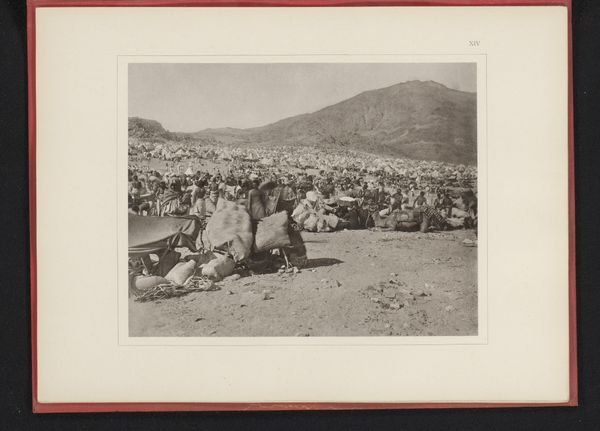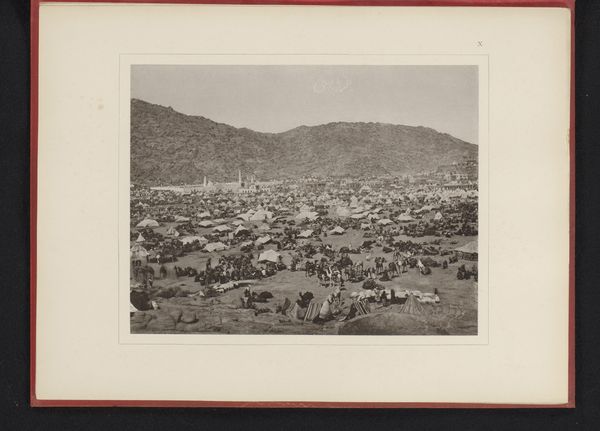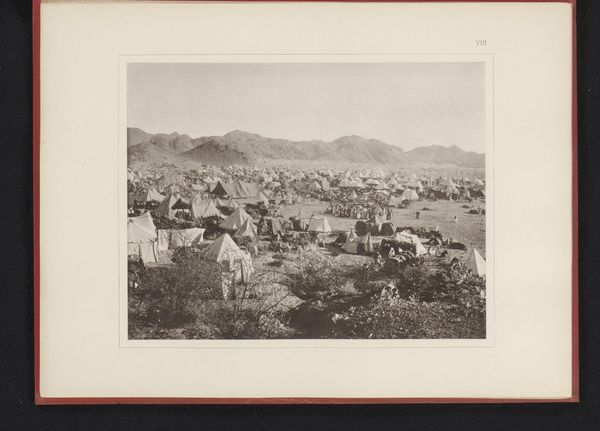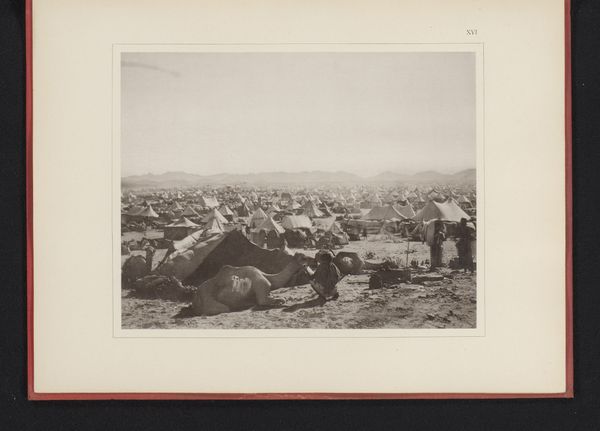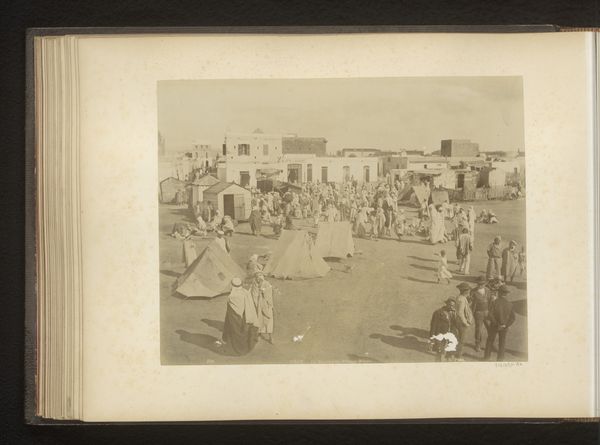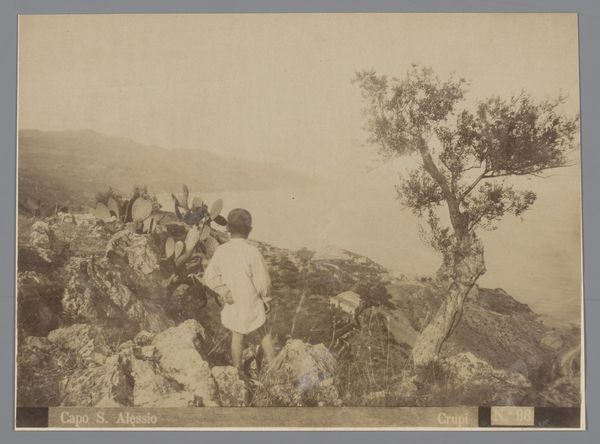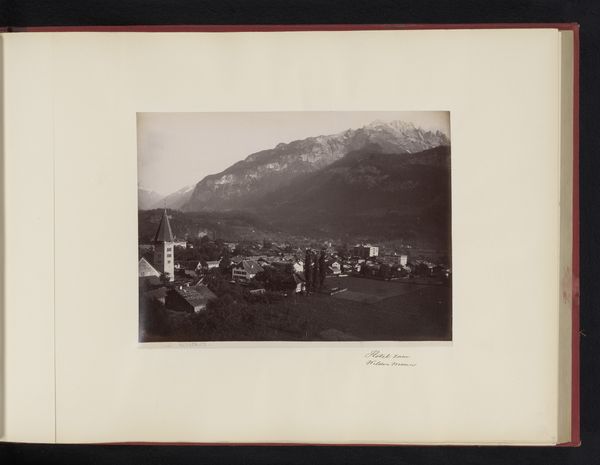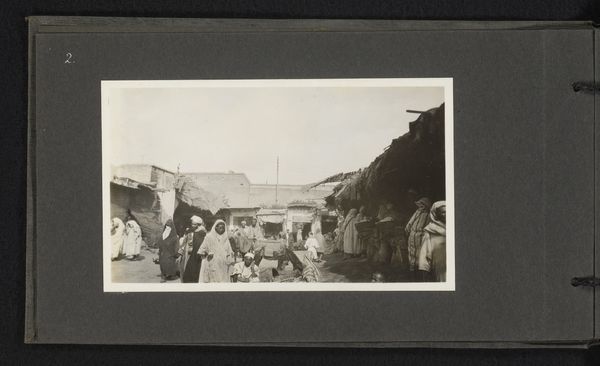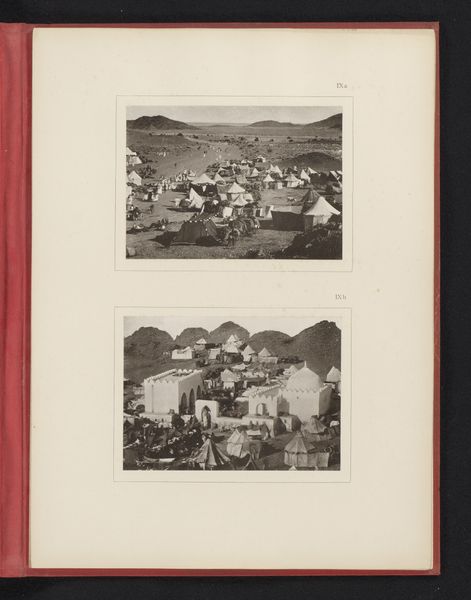
Graf van Mohammeds echtgenote Maymunah bij Mekka, omringd door pelgrimstenten tijdens de Hadj 1889
0:00
0:00
photography, gelatin-silver-print
#
landscape
#
photography
#
orientalism
#
gelatin-silver-print
#
islamic-art
Dimensions: height 270 mm, width 360 mm
Copyright: Rijks Museum: Open Domain
Curator: Immediately, I'm struck by the sheer scale of it, a monochrome ocean of tents receding into a hazy horizon. It evokes a sense of vastness, but also a strange kind of impermanence. Editor: This gelatin silver print, taken in 1889 by Abd al-Ghaffar, captures the tomb of Maymunah, the Prophet Muhammad's wife, near Mecca, during the Hajj. It's a powerful image, especially considering the socio-political context of documenting religious sites in that era. The image bears the name "Grave of Muhammad's wife Maymunah near Mecca, surrounded by pilgrim tents during the Hajj." Curator: The tents themselves become symbolic. They are temporary shelters, alluding to the transient nature of life, and pilgrimage. Are they a metaphor for our journey on earth, clustered around this sacred point? Each tent seems identical, fostering a sense of community or shared devotion. Editor: Precisely, and the image highlights that collective identity but it is an orientalist rendering too. Early photography of Mecca served not just to document but to project an image of the East that was often mediated through a colonial lens. This composition—the angle, the focus on the encampment from a distance—suggests a Western gaze observing a foreign spectacle. There's a romanticism, yes, but also a subtle sense of "othering." Curator: I hadn’t considered that gaze so acutely, but now I see it. And it alters how I interpret the symbolism. It is fascinating to consider how an image may seem "devotional" when one looks at the tents alone, but becomes observational with a sense of removal through the gaze and lens, the visual strategy, of orientalism. Editor: This image participates in a longer history. In that sense, the act of pilgrimage becomes not just a spiritual journey but a socio-political performance, viewed and interpreted differently depending on one's position and perspective. Curator: What an interesting way to look at it! To shift between those two modes of interpretation and let the visual information suggest meaning across those different readings. Editor: Ultimately, the photograph functions as more than just a record; it serves as a complex cultural document reflecting piety and colonial viewpoints of that historical moment.
Comments
No comments
Be the first to comment and join the conversation on the ultimate creative platform.

